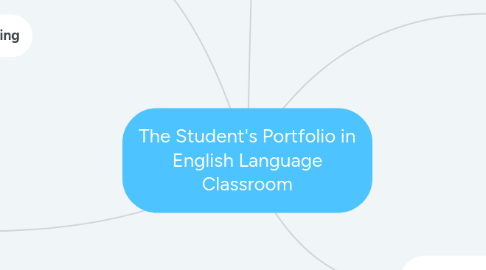The Student's Portfolio in English Language Classroom
by alexis ortiz


1. Types of Portfolios
2. Develop a Portfolio
3. The Process Portfolio
3.1. states that teachers use process portfolios to help students identify learning goals, document progress over time, and demonstrate learning mastery.
4. The Product Portfolio
4.1. involves the students' selected examples of their best work. This type of portfolio can be graded in one of two ways. In many cases, these items are graded normally and then placed in the student's portfolio.
5. Organization and Planning
5.1. initial phase of portfolio development entails decision-making on the part of students and teachers. By exploring essential questions at the beginning of the process, students can fully understand the purpose of the portfolio and its status as a means of monitoring and evaluating their own progress.
6. Collection
6.1. This process involves the collection of meaningful artifacts and products reflecting students' educational experiences and goals.
7. Reflection
7.1. there should be evidence of students' cognitive reflections upon the learning process and their monitoring of their evolving comprehension of key knowledge and skills.
8. Purposes of Portfolios
8.1. provide the students knowledge
8.1.1. - Encouraging self-directed learning. - Enlarging the view of what is learned. - Fostering learning about learning. - Demonstrating progress toward identified outcomes. - Creating an intersection for instruction and assessment. - Providing a way for students to value themselves as learners. - Offering opportunities for peer-supported growth.

